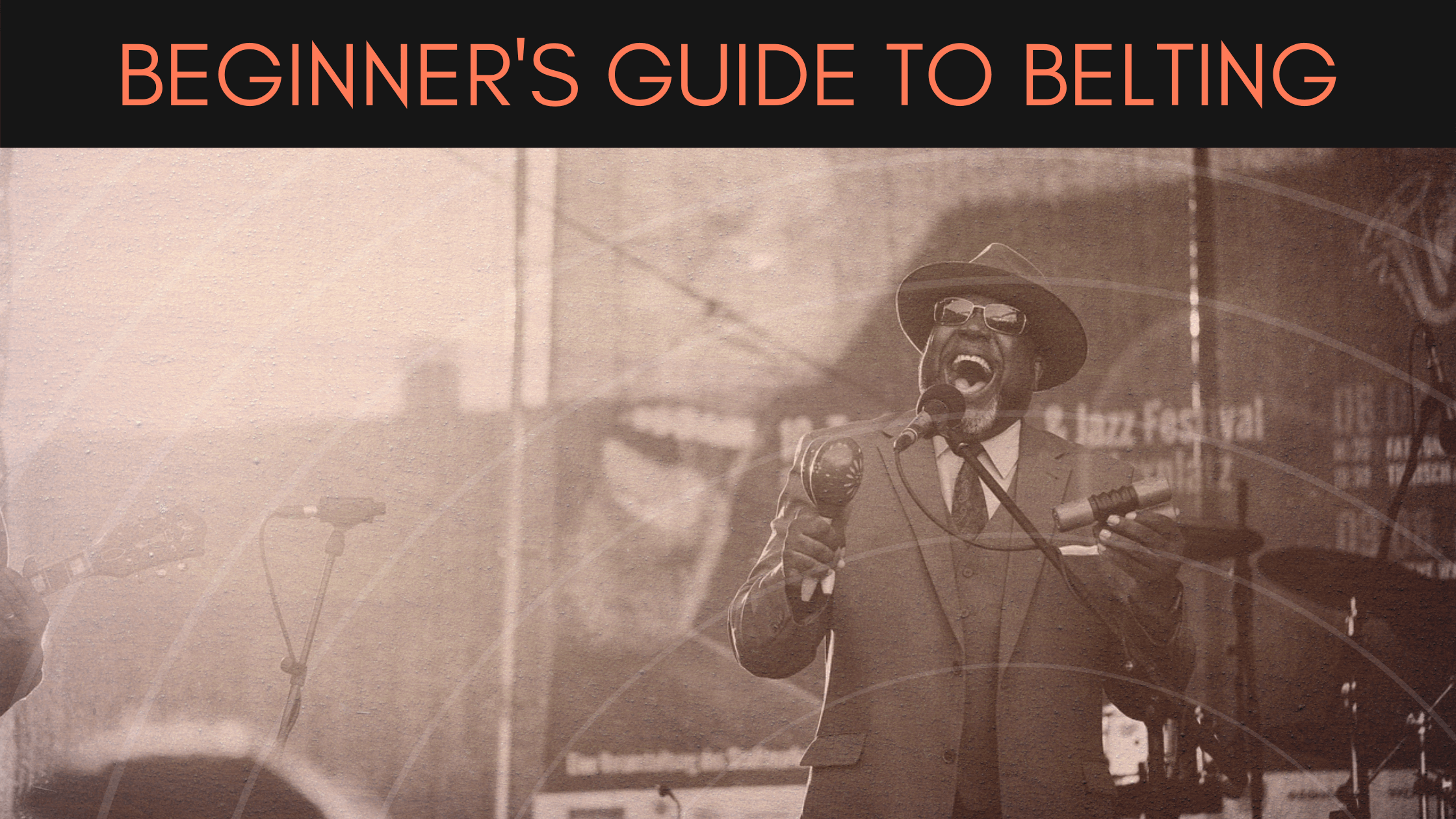Beginners Guide To Belting
April 23, 2021
by Camille van Niekerk
What is belting?
Belting is a high-energy, high-volume mode of singing in which a singer maintains their “chest voice” sound into the middle and upper portion of their range. Belting is both a vocal fold event AND an acoustic event, as described by master teacher John Henny this way: “Your vocal cords come together more strongly and hold back more air in a belt, creating a stronger sound wave. You then create brighter sounds (with your resonators) to give more edge and bite to the sound” (“Healthy Belting for Singers”). Although it might look and even sound quite similar to a “yell”, healthy belting requires finely tuned coordination that yelling does not.
Where is my “belt” range?
Think of belting as an intense, chesty mix. It’s a mode of singing rather than a specific range. The male voice’s middle/mix range is typically around Eb4-Ab4, and the female’s middle/mix is typically around Ab4-Eb5. So if you’re (a) singing pitches within that range with (b) stronger compression and (c) brighter vowel tuning, resulting in (d) a full, robust sound, we can say you’re belting!
Why is belting so difficult?
1. We have a few “natural” modes of making noise in our higher register, and belting isn’t one of them. Singers tend to either “flip” into head voice or they shout. The problem is:head voice lacks the intensity that contemporary singing requires, and we can’t sustain a shout for long without strain and pain.
2. The TA (thyroarytenoid) muscles are bullies. These muscles are responsible for medial compression: bringing your vocal folds together for a strong, robust sound. In chest voice, the TA muscles are dominant. In order to belt safely, we need the CT (cricothyroid or “head voice”) muscles to work as well. But the TA muscles don’t like giving up control! They either keep grabbing (you shout) or give up entirely (you flip or crack).
3. Looks are deceiving!You may hear an intense, full sound and attempt to match that intensity. But what you don’t see is the singer’s breath support or their laryngeal stability. What you don’t hear is their subtle vowel modification or the slightly lighter tone that indicates they’re mixing, not just using chest voice.
4. We’re all different. Some singers can get away with very loud, chesty belting night after night. Other singers have more sensitive voices and do better with other styles. Listen to your body and never ignore signs that you’re pushing it too far!
How can I learn to belt safely?
1. If you are a total beginner, you’ll first need to find your chest voice and head voice. For many beginners, their head voice is weak and underdeveloped. Don’t neglect it! Remember, head voice is a component of your mix, which is how you’ll access a healthyhigh belt.
2. Connect to your body for support. The more your abdomen helps provide resistance, the less your vocal folds need to hold back your air. Belting should tire out your belly muscles, not your throat!
3. Once you’re comfortable singing in both chest and head register, begin developing your mix with exercises like these: https://www.youtube.com/watch?v=qwiwZ3dS8mg&t=408s. You should notattempt to belt pitches you can’t first mix!
4. Once the pitches within your middle/mix range are stable, begin adding intensity to your mix via higher volume -but don’t rush it! If your mix feels unstable, we don’t want to add a bunch of pressure. That usually causes your voice to “hand over” entirely to chest function again.
5. Intermediate to advanced singers: over time, you can start to play with a slightly wider mouth position to bring in more of that edgy chest sound. You can also let the tongue come a little forward to boost those higher frequencies as well.
Playing it safe.
Developing your mix and moving towards that “belt” intensity can feel a bit like walking a tightrope. You feel that you’re always in danger of cracking. But think of it this way: falling on the side of cracking is the safer option. Falling on the side of yelling is many times what leads singers to vocal injury. It’s normal to feel a bit tired after working on your belt, but you should never feel pain! Please take frequent breaks (as in, every few minutes of belt exercise, rest for a minute or so). Only work on your belt AFTER you’ve warmed up your voice. And if you’re in doubt, book a lesson with a teacher who can point you in the right direction.

